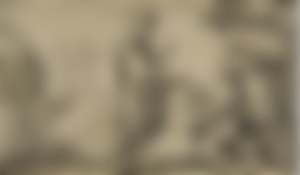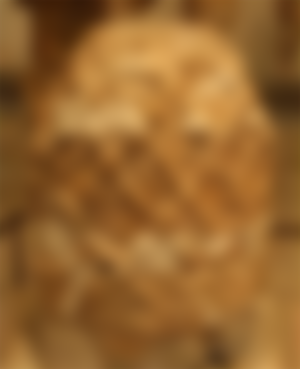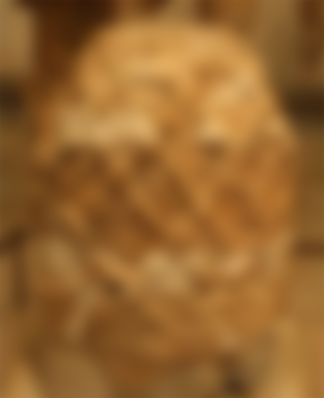One of the twelve Olympian deities, the son of Zeus and the titan Letta, the twin brother of the goddess Artemis. The myths of Apollo are numerous, but unrelated; the oldest and most famous are those who speak of his birth on the island of Delos (one of the Cycladic islands) and the founding of a sanctuary in Delphi.
Pregnant Leto, driven by Hera's jealousy, traveled to all countries and islands, praying for a place where she would give birth to divine twins. Fearing Hera's revenge, everyone rejected her except the small and desolate island of Delos. For nine days and nine nights, Leto struggled on Delos, because Hera kept the goddess of childbirth, Eiletia, on Olympus. The other goddesses, who had gathered to attend the birth of the new god, sent a messenger to Iris to Olympus to appease Eileti with a precious gift - a gold necklace nine cubits long. The moment the goddess stepped on Delos, Leto knelt, leaning on Mount Kint and embracing the palm with her hands, gave birth to Artemis, and then, with her help, to Apollo. When Apollo was born, the whole island blossomed and smelled, and the swans, with a beautiful song, flew around Delos seven times because it was the seventh day of the month. It is said that his birth was attended by a rooster and that this witness of the sunrise became Letina's favorite animal because of that. The goddess Themis fed the newborn nectar and ragweed, and she immediately discarded the diapers and accepted the gifts of Father Zeus - a golden miter, a lyre and a chariot with a team of swans. Apollo asked for a bow and arrow, which Hephaestus immediately gave him.
According to the Delos legend, Zeus ordered Apollo to go to Delphi immediately, but he, in a car pulled by swans, first went to the land of the Hyperboreans, a people living in the far north, on the shores of the Ocean. It was not until a year later that Apollo returned to Greece; he arrived in Delphi in mid-summer, where joyful nature greeted his arrival with songs of nightingales and crickets.

According to Delphic legend, Apollo arrived in Delphi from Olympus, but he immediately had to fight the dragon, which guarded the old Gaia sanctuary. This monster is nameless in older legends, and in later ones it is called Delfina or Python. Apollo found a dragon in a cave below Parnassus and killed it with an arrow of rain (picture above). After burying the angry enemy under the omphalos, he prepared a funeral play for him, and then he appropriated the old prophecy of Gaia and dedicated a tripod to the sanctuary, which has since become his symbol. Apollo, in the form of a dolphin, intercepted a ship of Cretan merchants and brought it to Chris, the port of Delphi. It was only in Chrissy that he appeared before the merchants in the form of a wonderfully handsome young man and took the Cretans as his priests. Due to the murder of Python, Apollo had to spend nine years in Thessaly for purification. After that, he returned to Delphi, as "pure", as Feb (Phoibos), with a wreath and a branch of holy laurel from Thessaly Tempe. He later had to defend his prophecy from Hercules. When Pythia (a prophetess and priestess in the temple of Apollo at Delphi, famous for her ambiguous answers) refused to prophesy to Hercules, who was sick and stained with blood, he stole the holy tripod to establish his prophecy elsewhere. Apollo then attacked his half-brother (pictured below), but an angry Zeus separated them by throwing lightning between them. Apollo also fought other enemies, including Phlegia and Titus.

To explain the difference between Delos and Delphic myths, there is a story that Leto was persecuted by Python even before Apollo's birth, that is, that Apollo went from Delos to Delphi on the fourth day after his birth and killed a dragon that threatened his mother. It was also rumored that the inhabitants of Delphi invited Apollo to leave the Hyperboreans and come to them.
Other myths about Apollo are unrelated; the most famous are those about his love for Hyacinth and Cypress, Daphne, Driopa, Cyrene, Cassandra, Castalia and Marpesa. All these loves end tragically: Hyacinth suffered at the hands of Apollo, Cypress was transformed into a tree of mourning, and Daphne - into a laurel. Apollo had numerous descendants: Coronida gave birth to Asclepius, Cyrene - Aristotle, Euadna - Jama, Akakalida - Kidon and Mileta, Kaliopa - Lina, Orpheus and Hymenaeus, Manto - Pug, Phthia - Dora, Laodicea and Polypetta, and Roy - Ania . His children are most often eponymous heroes of certain cities or larger areas in Greece and Asia Minor.
Apollo was forced to serve mortals in two waves. Because he killed Python or the Cyclops, Zeus punished him for being a servant of King Admetus. Later, together with Poseidon, he was in the service of the Trojan king Laomedon, either because of the rebellion against Zeus or because the gods decided to tempt that king. With both Admetus and Laomedon, Apollo kept cattle. It is said that Admet's or Apollo's cattle were stolen by the newborn Hermes. Apollo found a small thief and stolen cattle, but Hermes alleviated his anger by playing the lyre, which he had just invented. Delighted by the new instrument, Apollo gave him his cattle and kerikeon (golden rod) in exchange for a lyre; since then the two gods have been linked by a deep and lasting friendship (pictured below).

In antiquity, the Kara-Frisian myth about the competition between Apollo and Mars was very well known. Marcia, the inventor of the twins, whose gig enchanted everyone who would hear her, dared to invite Apollo to a gig competition. It was agreed that the winner would punish the loser at his discretion, and the residents of Nisa were chosen as judges. After the judges declared Apollo the winner, Marcia was severely punished: Apollo tied him to a tree, then skinned him and hung his skin in the square in Kelena. Apollo soon repented of his cruelty, tore the strings on the lyre, and for a time neither played nor sang. Some say that after the victory, Apollo spared the life of his opponent and that Marcia, as a punishment, received a pig's tail.
In the myth, Apollo is associated with a number of deities. Together with other Olympians, he participated in gigantomachy. In the Trojan War, he helped the Trojans in the fight against the Greeks and caused the death of Achilles. However, his connection with Artemis (in the myth of Delos) and Dionysus (in the Delphic myth), as well as with the muses, choirs, charites and nymphs, is most pronounced. Apollo is already in the oldest tradition marked as the leader of the choir of muses (Musagetes). Together with Artemis, he punished Niobe and Titus, and with Dionysus he shared the sanctuary in Delphi. During the three winter months, Dionysus stayed there, to whom dithyrambs were sung, and in the other months, Apollo was present, to whom songs were sung. Apollo's close connection with certain animals, things and plants, expressed in the cult, is also explained by special myths. His sacred animals are bull, lion, boar, hind, goat, dolphin, mouse, lizard and frog; birds - swan, raven, hawk and kraguj, and plants - laurel, palm and olive. Apollo's attributes are a bow and arrow, a lyre, a tripod and an omphalos (picture below).

The origin of Apollo's name is unclear; its name is probably derived from the Babylonian word apullu (meaning "door"), or the name of the Hittite god Apullunas, the protector of gates and entrances.
Based on the names, myths and preserved archeological monuments, it is concluded that Apollo is a deity that the Greeks took over from the Hittite-Babylonian cultural circle during the Mycenaean culture, through Crete or the Mycenaean colonies on the Aegean islands and the coast of Asia Minor. The Hittite god Apulunas is probably the predecessor of Apollo Agieus ("gatekeeper"). In the Babylonian religion, the gates (abullu) are protected by the sun god Shamash, who, like Apollo, is a god builder, prophet and legislator. The sanctuary of Shamash was considered, like the Delphic omphalos, the center of the world. On the other hand, the conical stone with ribbons, the symbol of Apullunas, is similar to omphalos, and it is known that the oldest cult statues of Apollo were aniconic, in the shape of a pillar or cup (Apollo of Amikla, Apollon Agyieus). Apollo may also be associated with stones found in front of the entrances to Troy. The connection between Apollo and the Trojans is also emphasized in the myth: Apollo builds the walls of Troy, kills Achilles in front of the city gates and always protects the Trojans in the Trojan War. The lion, which is an attribute of the oriental sun god, also became an attribute of Apollo, especially on the coast of Asia Minor and the islands (the alley of lions on Delos). Finally, the calendar indicates Apollo's oriental origin, because in his cult, as well as in the myth of birth, the seventh day of the month plays a significant role, which is also one of the elements of the Babylonian religion. It is certainly significant that in the myth, Lycia or Ephesus is sometimes mentioned as the place of Apollo's birth.
The connection of the Greeks of the Mycenaean epoch with Asia Minor and the Hittite-Babylonian cultural circle is also attested by archeological findings, so it can be assumed that Apollo was revered on the Aegean islands and the Greek mainland certainly in the middle of the second millennium AD. The introduction of his cult is probably related to the erection of fortified cities on the Greek mainland during the Mycenaean era. First the god of the city population, Apollo gradually suppressed various local deities of vegetation, which is illustrated by the myths of Hyacinth and Carney. Thus, the new god was quickly accepted throughout the Greek world - from Delos to Delphi and from Crete to Thessaly. In the Iliad, which reflects the circumstances in the Greek world at the end of the Mycenaean era, it is noticed that Apollo, although portrayed as the protector of the Trojans, is still a deity to whom the Greeks show special respect.
Apollo had several functions, which arose from his basic and oldest function - to defend and protect. Already the Hittite Apulunas was the deity of the gate, defending against evil. The closest to this Hittite deity is Apollon Agyieus, whose symbol - a pointed pillar - was placed in front of houses to protect them. Apollo's protector of gates (Prostaterios) and protector of entrances (Propylaios) are similar to him. Apollo's epiclesis Apotropaios and Alexikakos also indicate its primary function - the rejection of evil.
Apollo is also associated with vegetation, but not as an agrarian deity, but again as one who protects fields, sowing and crops; he is the protector of the harvest (Thargeios), the one who defends crops from field mice (Smintheus) and from locusts (Parnopios). That his functions were important is shown by the statues of Apollo Parnopius (Phidias 'work) and Apollo Sminteus (Praxiteles' work). As a protector of crops, he assimilated the older deities of vegetation. Thus in the Peloponnese he suppressed Hyacinth, degraded him to a hero, and appropriated his feast of Hyacinth. He also appropriated the holiday of Carneia, and he took the name Carneios from the god Karna, to whom that holiday is dedicated.
One of Apollo's main functions is healing, which is expressed in the oldest tradition: in the Trojan War, he calmed the pain and saw the wound of Glaucus, but he sent disease, infection and death with his arrows. As every disease was considered a kind of impurity (miasma), which could be removed by purification and repentance, the god who sent the disease easily became a god who protects from the disease.
One of Apollo's qualities is mantic (the skill of divination, divination). It developed from his vidar function, because in all nations, magicians and sorcerers (doctors) are also prophets. His sanctuary in Delphi became the most famous prophecy of the Greek world, and in many other sanctuaries of Apollo it was prophesied in various ways.
Apollo is also the god of death; in the Trojan War he disarmed Patroclus and sent the plague to the Greek camp with his arrows. Penelope's beggars were killed on his holiday, and he also appears in the myth of Alkesta as the god of death. He is also the god of music and art; immediately after his birth, he received a lyre from Zeus, with which he cheered the gods at a feast, and the muses sang under his guidance.
As the god of seafaring, Apollo is called Delphinios; in that capacity it is associated with Greek colonization, because the whole of the Greek colonies bears his name. Apollo is the leader and founder, so a large number of cities and noble families consider him their ancestor. Only from the 6th century AD did Apollo identify with Helium and become the sun god. He was a god of light before, but not elementary but spiritual, in the sense of heavenly purity and full splendor, which is why the epithet Feb became his personal name. The messages written on the temple in Delphi are connected to that Apollo (Phoebus): "Know thyself" and "Nothing too much". Thus, over time, Apollo became the god of measure, order, law, positive creative forces and artistic inspiration.
The most famous shrines of Apollo in the Greek world were located in Didyma and Clare, on Delos and in Delphi. Numerous temples are dedicated to him, of which the most important are the temples in Corinth and Thermae (7th century AD), in Selinunte (6th century AD) and in Basam (5th century AD). In the part of Apollo, the holidays of Hyacinth, Carneia, Targelia, as well as the Pythian games were celebrated.
The earliest representations of Apollo had an aniconic form. His cult statue in Amiklam was made of bronze, in the shape of a pillar, and on it only the face, arms and legs were human. There Apollo is depicted with a helmet on his head and a spear and bow in his hands. The oldest surviving representation of Apollo dates from the end of the 8th century AD (a head with a helmet made of terracotta, also from Amikl). Already in the early 7th century AD, Apollo was depicted as a naked young man, with long hair or a helmet on his head, with a bow and arrows in his hands (bronze statuettes from Thebes and Drera). In the sculpture of the archaic period, he is shown naked and without a beard, while in painting, on vases, he is represented dressed with a beard, most often as a guitar. The famous vase from Mel shows the arrival of Apollo accompanied by Hyperborean virgins from the land of the Hyperboreans: with a guitar in his hand, Apollo rides in a chariot drawn by winged horses (the earliest performance of Apollo Kitarod). A supernatural statue of Apollo (around 600 AD) was found on Delos; it is not excluded that some of the archaic "young men" (kurosi) represent Apollo.
The cult statue of Apollo for the sanctuary at Delos was sculpted by Tektay and Angelion; there Apollo is depicted with outstretched arms: in his left he held a bow, and in his right three haritas, while at his feet sat two griffins. This cult statue served as a model for Apollo's sculptures made by Kanah, as well as the cult statues in Didyma and Thebes.
Certain scenes from the myth of Apollo are also shown on the reliefs and in important paintings. His fight with Heracles over the tripod is most often presented (the eastern gable of the treasury of the Siphnians in Delphi, a large number of black-figure vases). Of the other mythological scenes, the punishment of Niobe and Apollo's struggle with Titus are shown (picture below).

At the beginning of the 5th century AD, the iconography of Apollo was finally established: he is shown naked, less often as a trained young man, without a beard and with shorter hair. The statue of Apollo from the western gable of the Temple of Zeus in Olympia is known from that time. There are numerous performances on vases, where new scenes from the myth of Apollo are shown, such as: the fight with Python, the theft of Apollo's cattle and Apollo's conflict with the giants. During the second half of the 5th century AD, the iconography of Apollo did not change. It was not until the 4th century AD that the great sculptors - Praxiteles, Skopas, Briaxides and Leohar - created a new type of Apollo. A copy of Praxiteles' statue of Apollo Saurocton is known, where he is shown as a young man. The same artist, as well as Skopas and Brijaksid, also made statues of Apollo Kitarod. Skopas sculpted the cult statue of Apollo Sminte, which depicts a god putting his foot on his sacred animal - a mouse. Leohar made three statues of Apollo, the most famous of which is Apollo Belvedere. Scenes from the myth are mostly no longer shown, that is, Apollo still only presents himself as an observer of various events. In Hellenistic and Roman art, it is mainly represented by models from the end of the 5th century AD and from the 4th century AD. Scenes from the myths of Niobium, Daphne and Marcia are depicted on sarcophagi, mosaics and frescoes.
Literature:
• Dragoslav Srejović - Aleksandrina Cermanović-Kuzmanović, Recnik grčke i rimske mitologije, drugo izdanje, Beograd: Srpska književna zadruga, 1987





Apollo, as the god of music, was more important than the muses (adjective Musagetes). But it also brought death and destruction. He carried out revenge with arrows; so he sent the plague to the camp of the Greeks during the Trojan War, when they kidnapped the daughter of the priest of Apollo and made her a slave. He also contributed to the death of Achilles as he led the Paris arrow.
The story of Apollo and the handsome young man Hyacinth, which ended in misfortune, is also known; Apollo accidentally hit Hyacinth in the head with a discus and thus killed his love.
The sanctuary at Delphi, the most important ancient oracle, was dedicated to Apollo.